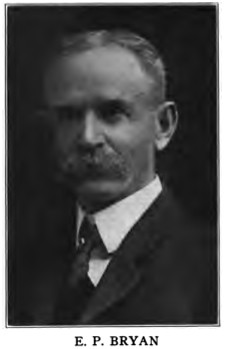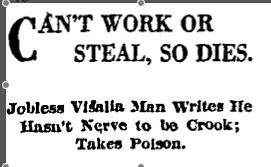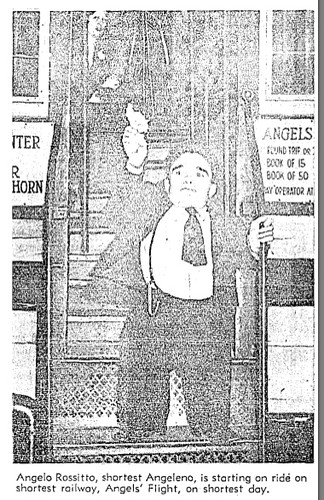
For many, the tragedy of Bunker Hill was seeing Victorian structures that had survived more than half a century torn down in the blink of an eye. While many homes did survive for up to eight decades, others like the Crocker Mansion had somewhat abbreviated lives, lasting a mere thirty years or so. The E.P. Bryan residence at 333 S. Grand, however, might possibly win the award for shortest existence of a mansion on Bunker Hill.
Elden P. Bryan was a Texan who landed in Los Angeles in 1886 and made a fortune in real estate, most notably selling H.E. Huntington his first piece of property. Around 1890, the Bryan family decided to reside in the quickly developing Bunker Hill neighborhood and construction began at 333 S. Grand Avenue. A superstitious man, Bryan allegedly halted construction and altered architectural plans numerous times to suit his paranoia. The finished product was an elegant home with two sets of stairs leading up to the front door. One set was made up of fourteen steps and the other twelve, deliberately designed to avoid the unlucky number thirteen. The real estate baron and his wife, Georgie, entertained other prominent Los Angeles folk at the residence, frequently receiving coverage in the society column

In 1904, Bryan was developing the Westmoreland Tract in the Wilshire-Pico District and construction commenced on an eighteen room home by architect Charles F Whittlesey, who incorporated his trademark reinforced concrete into the design. It is unknown if Bryan left Bunker Hill because Westmoreland was more fashionable or because he felt the Grand Ave residence to be unlucky after all. By 1906, the Bryan family had moved into their palatial new quarters and the home on Bunker Hill was gone, replaced by the Fleur-de-Lis Apartments and another house. The E.P. Bryan Residence has existed for approximately fourteen years.
Perhaps the superstitious homeowner had been onto something. In the ensuing years, many residents of the building that replaced the short lived mansion would suffer severe misfortunes.

In 1907, John Harding was half a block away from his Grand Ave lodgings, when he was beaten within an inch of his life in a case of mistaken identity. Another resident, P.J. Sinclair, had been out of work for sometime before he decided to end it all by swallowing poison in 1938. Several days went by before his body was discovered inside the boarding house, along with the suicide note that read "I have not got the nerve or conscience to be a crook and under the present conditions it is better to die than to live." In 1932, Everett R. Todd thought jumping out the window of his room a preferable way to end it all. His reasons according to the letter he left behind were "the suffering I am causing so many people and because of nervousness." Then there was C.L. Devont, who was despondent over a failed marriage in 1934 when she shot herself in the heart . At least she was thoughtful enough to write a farewell note, leaving all her possessions to her estranged husband.

It wasn’t all gloom and doom at the Fleur-de-Lis Apartments, later known as the Capitol Hotel. In 1937, residents were involved in a 1,200 person written protest, objecting to the City Council’s proposal to replace Angels Flight with an elevator. The building also held the distinguished honor of housing Los Angeles’ shortest man, Angelo Rossitto, who was two feet eleven inches tall.
By 1962, "progress" had come to Bunker Hill and the Capitol Hotel went the way of its Victorian predecessor.
Image of Bryan Mansion courtesy of the Los Angeles Public Library Photo Collection

